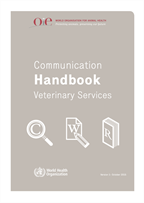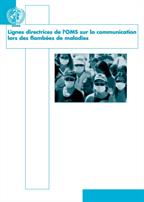
Guidance
Risk communication is one of the eight core functions that WHO Member States must fulfill as signatories to the International Health Regulations (2005). Risk communication is also a component of global and country preparedness for an influenza pandemic, as part of the Pandemic Influenza Preparedness (PIP) Framework.
WHO guidance on risk communication
While principles, good practices and training programmes already exist in the field of risk communication, there is no single, comprehensive, evidence-based, up-to-date, systems-focused WHO guidance for Member States in this area.
In order to address this gap, WHO has embarked on a project to develop a guideline on emergency risk communications. The guideline is expected to cover:
- communicating during public health emergencies; and
- building and sustaining local capacity.
Communicating risk in public health emergencies: a...
Q&A
During recent decades, there has been a huge increase in international travel and trade, and populations have become more mobile, meaning that diseases can more easily cross national borders. The increasing use of the internet and mobile telephones has, in many parts of the world, transformed the way people communicate. People are confronted with health advice from multiple sources, and it can be difficult to determine which are credible and based on scientific evidence.
The Ebola Virus Disease (EVD) outbreak in West Africa and other public health emergencies and humanitarian crises around the world have highlighted enormous challenges in communicating risk to affected populations. They have underscored the barriers faced by national authorities, civil society, and international agencies when they need to communicate rapidly and effectively during such events.
Risk communication is one of the eight core functions that WHO Member States must fulfil as signatories to the International Health Regulations (2005). Risk communication is also a component of global and country preparedness for an influenza pandemic as part of the Pandemic Influenza Preparedness (PIP) Framework.
While principles, good practices and training programmes already exist in the field of risk communication, there is no single, comprehensive, evidence-based, up-to-date, systems-focused WHO guidance for Member States in this area.
In order to address this gap, WHO is embarking on project to develop guidance on emergency risk communication. The guidance is expected to cover: 1) communicating during public health emergencies; and 2) building and sustaining local capacity.
For further information, please contact riskcommunication@who.int.
Publications
Behavioral change communication
Communication for behavioural impact (COMBI) - field workbook
Communication for behavioural impact (COMBI) - toolkit
This interagency (FAO, UNICEF, WHO) toolkit will be useful for anyone wanting to design effective outbreak prevention and control measures in community...
Effective communication during public health emergencies

Until the outbreak of an exotic communicable disease or other dramatic event, the elaborate infrastructures and mechanisms that protect public health...
Outbreak communication

WHO outbreak communication guidelines
Disease outbreaks are inevitable, and often unpredictable, events. The environment surrounding an outbreak is unique in all of public health. Outbreaks...
